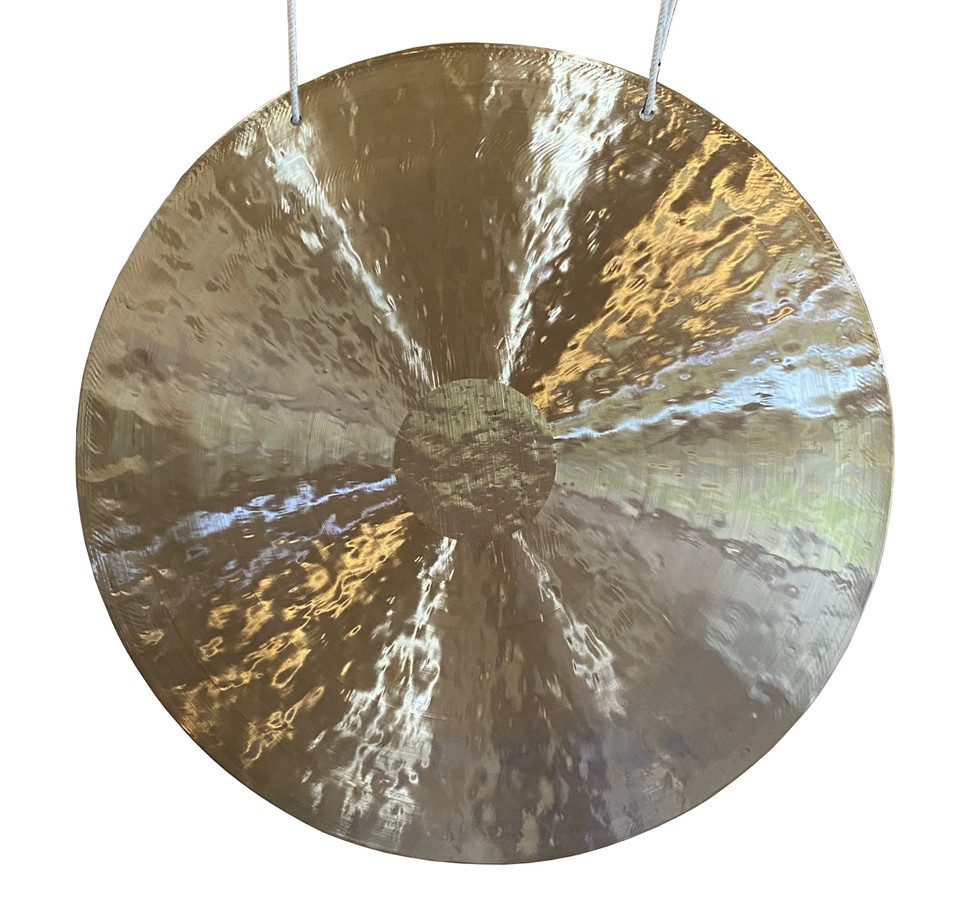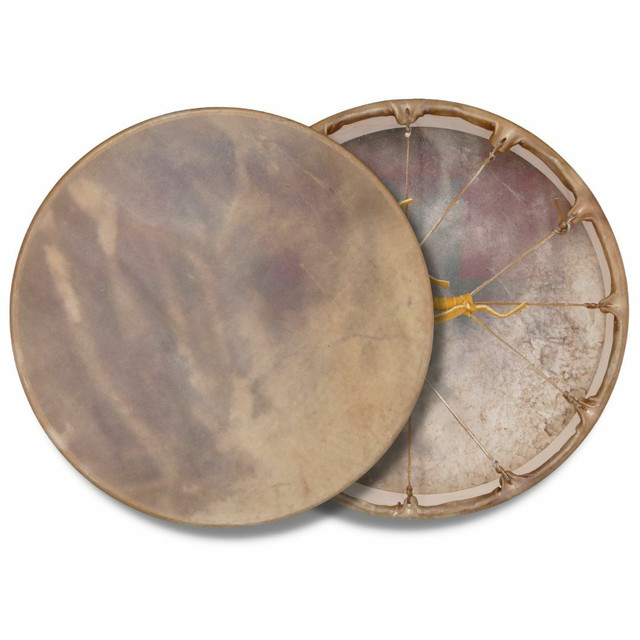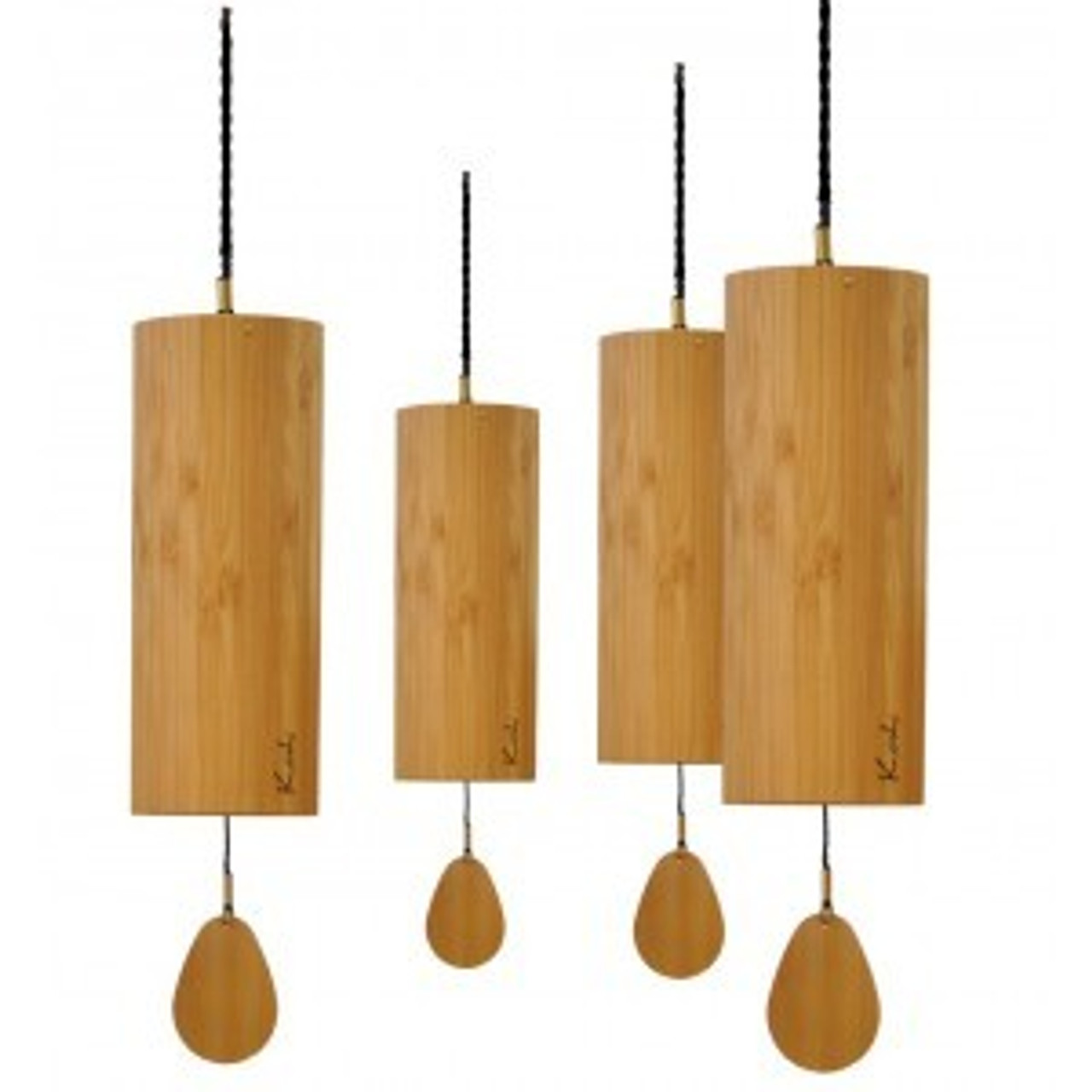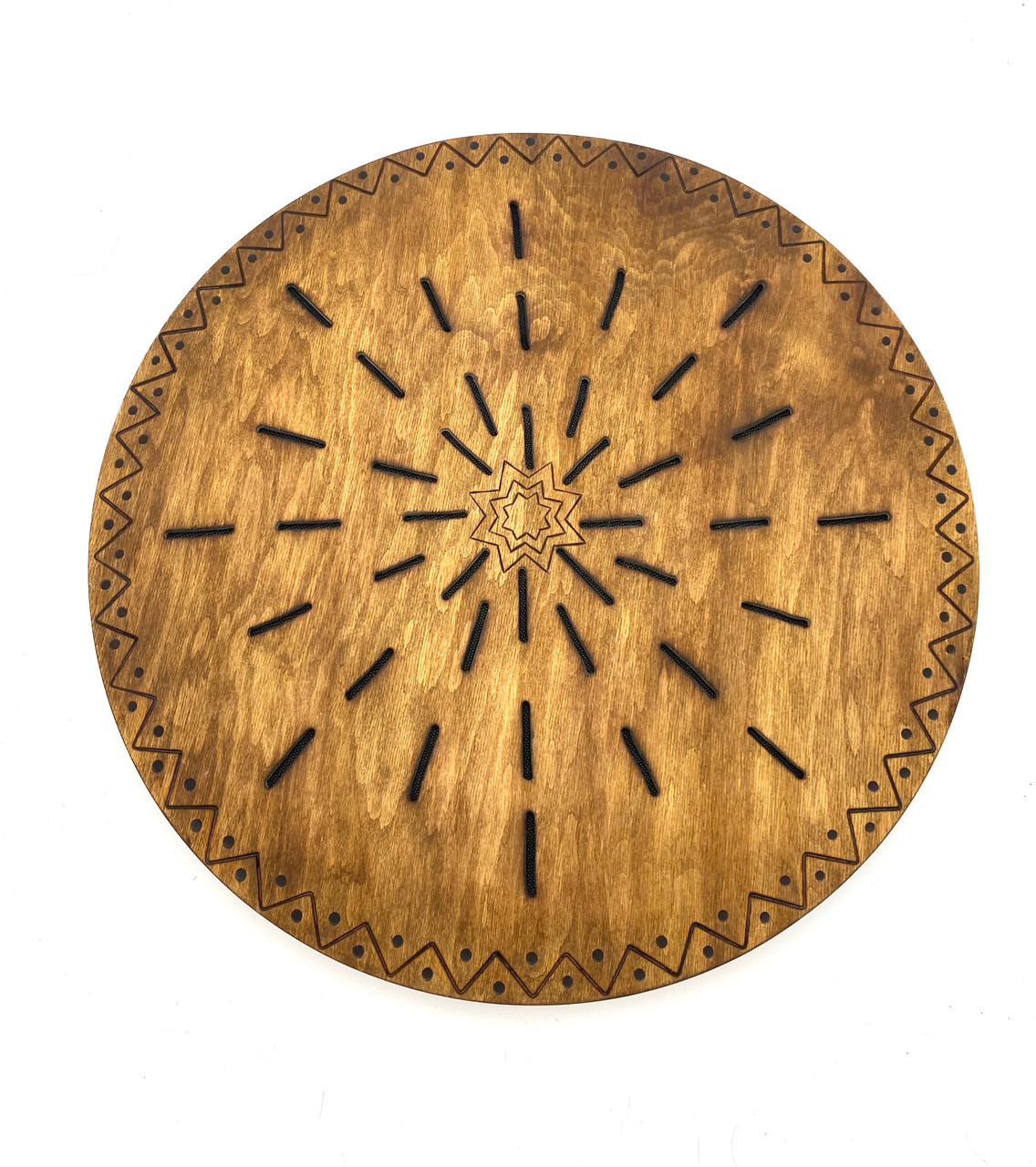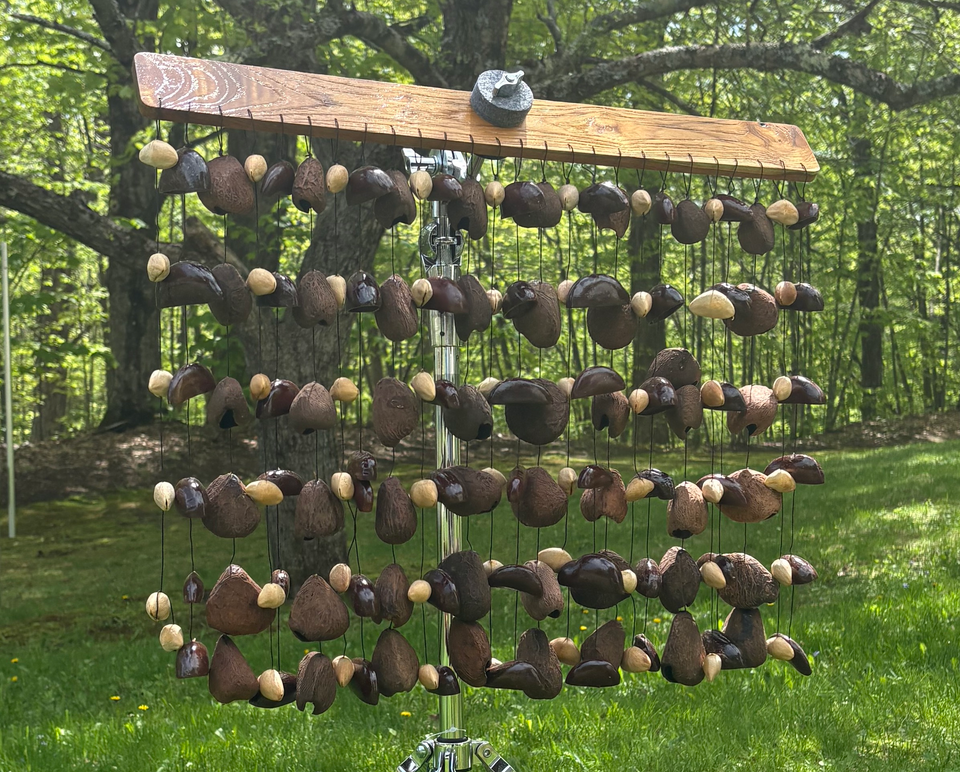Watch Zacciah Blackburn discuss choosing a Native American Frame Drum
Traditions world wide honor the shamanic, hoop, or frame drum as an instrument to honor the heart beat of the Earth and the harmony of life, to gather the People, to invoke and to engage in qualities of spiritual knowing and integrity, to heal, and to honor the cycles and unity of life. Sunreed's Traditional Native American frame drums are handmade by a Maidu Native American shamanic drum maker. We have had the privilege to sell his drums for over 10 years. These are the best we have ever found for quality of sound, strength and durability. Our maker apprenticed with a Lakota maker, and makes his drums in the Lakota/Plains style of traditional hoop or frame drums, which includes the traditional four directional lacing of the drum, which is easy and comfortable to hold for a long time. Each drum is made in prayerful intentional in consideration of the medicine of the hide. He handcrafts these beautiful, shamanic/medicine drums to withstand the rigors of long and intentional use. They are laced very tight, and are full wrapped which allows them to be played in a greater range of environmental conditions without going flat or cracking from dryness. These drums by far hold their tone longer in humid conditions than any other drums we have played, and are truly made to last.
Choosing The Size and Skin Of Your Drum: When choosing the skin and size of the drum, there is the tone, weight and medicine (or spiritual qualities) of the animal to consider.
Generally, Deer and Elk are the thinnest skins, so are the lightest drums, followed by Horse, Moose and Buffalo. Many feel quite comfortable holding a 18" Deer, though a thick 18" Buffalo drum may feel too heavy. For most adults we recommend 18" drums, as they have clear bass notes and great resonance, and are generally small enough and light enough to hold comfortably for most people. If you feel like you are of a smaller build, then perhaps a 16 inch drum would be the best choice to hold for longer ceremony. With 16" drums you can still get a good bass note, though they are lighter and easier to hold than 18". A 14" drum will still have a small bass note, and will be lightweight so can be held for a long time in ceremony. We recommend the 10-12" drums, which have higher notes, for fitting in backpacks, traveling with, or for children.
All natural skin drums absorb moisture in humid conditions and may change or lose their voice. This does not damage the drum. When this happens, applying heat or sun to the drum will regain its voice (complete instructions on this are given with each drum, and can be downloaded in our drum section.) In dry conditions, the skin will tighten, bringing out a higher voice. Those in more humid conditions may want to consider a Moose, Buffalo or Horse drum. These are thicker and withstand humidity a little longer. Elk does withstand humid conditions, though may also need to be heated or dried more often for its best voice. While deer is greatly appreciated for all of its qualities, it is the thinnest of these skins. It will have a great voice in drier climates, but may lose its voice easily if you are in high humid conditions. It also responds easily to heat or sun. If you live in an exceptionally dry climate, such as Arizona, your drum may become too tight without moisture. In this case, thicker drums will hold their tone better, such as Buffalo, Moose or Horse, rather than Elk or Deer. It is best to keep your drum stored in a dry, cool location, out of the sun or away from heat, to ensure your drum does not get too dry or humid and maintains it's voice.
Medicines: The medicine, or spiritual quality of an animal may be very beneficial to consider. In shamanic traditions, one's relationship with a drum is unique and important. One's relationship with the spirit of the animal, or its medicine qualities, can create an even richer relationship. A simple way of finding the right skin to use, is to meditate, or to go into a clear state within yourself, and ask yourself what animal will support you, and what animal you will want to work with, or which animal wants to work with you, for the intention or intentions you want to use the drum. This can easily answer the question for what skin to use. For those working in a traditional way, the medicine quality of the animal you are working with, may be the most important ingredient in making your choice. For those in the Great Plains, Buffalo was the Great Gift of Spirit. In the East, Moose serves much the same way. Elk was a great medicine giver throughout much of the mountainous regions of North America. Horse, though not indigenous to the Americas, has become a great medicine ally to its indigenous peoples. It is one of the most popular medicine animals in Europe, where the indigenous peoples there worked with the horse as a tremendous ally. Horse continues to be a strong ally where indigenous peoples still thrive, such as in Mongolia. Deer and Bear (when available) offer the medicine of the Great Mother in indigenous traditions. The deer represents the softer side of the feminine, such as the Heart of Compassion. Indeed the Buddha is often represented as a deer for this reason. Using the hide, like of all parts of an animal is, in indigenous philosophy, a way of honoring the animal and of completing the circle of life. It is also a way of empowering ourselves with those qualities we wish to carry, imbue in our lives, and use as tools for healing in our practice, and in our prayers. We do this with great care and respect. Below are some further understandings of the medicine qualities of these animals:
- Moose - Feminine energies and the magic of life and death
- Elk - Strength and nobility
- Deer - Gentleness and Innocence - Gentle luring to new Adventure
- Buffalo - Manifesting abundance through right action
- Horse - Power, travel and freedom
Ethically Sourced: The animals that are used to make our drums are used as medicine within the tradition of our drum maker. The animals are honored for their time on earth, and the benefit they bring to those using the drum. The hides are ethically sourced. For example, our horse hides come from horses who have died of natural causes. All of the animals were either wild, or have not been raise in confined spaces, nor tortured, nor were part of a slaughterhouse operation. The animals have all lived with space and freedom.
Drum Beaters: There are generally two types of drum beaters, soft and hard. Soft beaters have a more soft cushioned core, with a more flatter surface area to strike the drum. These drum beaters bring out the richer, deep, full bass notes of the drum. This is our highest recommendation for a drum beater. A hard beater is usually more traditional, is tightly wound in its core, and shaped more like a ball. These drum beaters typically bring out a more sharp note, more focused on the higher tones of the drum. This might be seen as a more powerful note from the drum, whereas the soft beater might be seen as bringing out more of the heart of the drum.
Sound File Videos

Sound Comparison Of 12 Inch To 24 Inch Native American Frame Drum
18 Inch Native American Frame Drum
16 Inch Native American Frame Drum
14 Inch Native American Frame Drum
12 Inch Native American Frame Drum
24 Inch Native American Frame Drum










